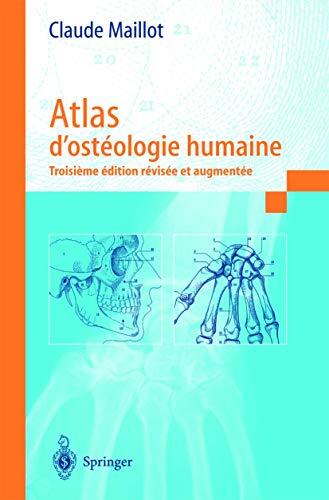
Atlas d'ostéologie humaine
par
Claude Maillot Jean-Georges Koritke
Pas encore d'évaluations
Graphic Novels
Format
Broché
Pages
231
Langue
Français
Publié
Jan 1, 2003
Éditeur
Springer
Édition
3ème éd. 2003
ISBN-10
2287005021
ISBN-13
9782287005022
Description
This comprehensive work delves into the intricate world of human osteology, crafted by the expert hands of Claude Maillot and Jean-Georges Koritke. It serves as a vital resource for students, practitioners, and anyone interested in the field of human anatomy. Together, the authors present an exhaustive exploration of the skeletal system, meticulously detailing the structure and function of bones.
The illustrations within the book are both technical and visually engaging, allowing readers to appreciate the complexities of the human skeleton. Each section guides the reader through the major bones, articulations, and anatomical landmarks, enhancing their understanding of human biology. The authors combine their extensive knowledge with a passion for teaching, making intricate concepts accessible to a broad audience.
This atlas is not just a reference guide; it invites readers to delve deeper into the subject, encouraging a connection between visual representation and anatomical knowledge. It's an essential companion for those pursuing studies in medicine, biology, or related fields, ensuring that vital information is readily available and comprehensible.
In essence, this work stands as a testament to the dedication of its authors in the pursuit of education and clarity in the ever-evolving field of human osteology.
The illustrations within the book are both technical and visually engaging, allowing readers to appreciate the complexities of the human skeleton. Each section guides the reader through the major bones, articulations, and anatomical landmarks, enhancing their understanding of human biology. The authors combine their extensive knowledge with a passion for teaching, making intricate concepts accessible to a broad audience.
This atlas is not just a reference guide; it invites readers to delve deeper into the subject, encouraging a connection between visual representation and anatomical knowledge. It's an essential companion for those pursuing studies in medicine, biology, or related fields, ensuring that vital information is readily available and comprehensible.
In essence, this work stands as a testament to the dedication of its authors in the pursuit of education and clarity in the ever-evolving field of human osteology.
Avis
Aucun avis pour le moment
Soyez le premier à donner votre avis sur ce livre et partagez vos pensées
Ajouter le premier avisJournal de lecture
Aucun journal de lecture trouvé
Commencez à suivre vos progrès de lecture pour voir les journaux ici
Ajoutez votre premier journal de lectureNotes
Journal des transactions
Aucun journal de transactions trouvé
Commencez à suivre vos transactions de livres pour voir les journaux ici
Ajoutez votre premier journal de transactions